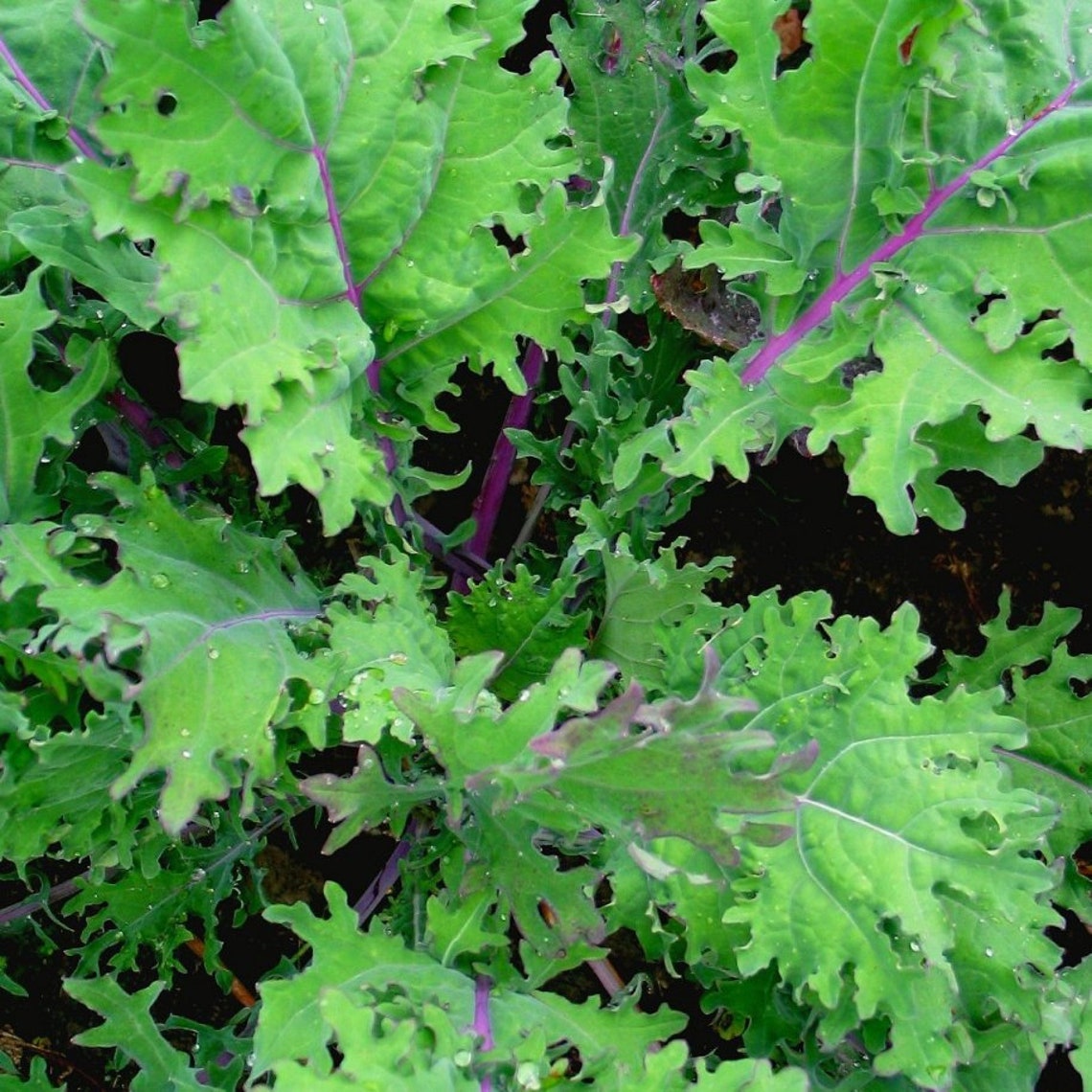

- Red russian kale seedlings how to#
- Red russian kale seedlings skin#
- Red russian kale seedlings full#
This variety has blue green leaves that are very curly. The most popular variety is ‘Blue Curled Scotch’ kale, also called ‘Vates’ kale.

Use it in green salads for a pop of color! Scotch Kale Scotch kale has a blue-green tint to its curly leaves. It is a purple kale that looks pretty in cooking, although it will lose some of its color when cooked.

It is a hardy plant that can grow up to 5 feet tall! Redbor kale is a hybrid. It may start out as a more flat leaf, but the color, flavor, and curling of leaves is increased by cold weather. Redbor is a kale that can have deep burgundy to purple leaves. Redbor Kale Redbor kale has a deep, red-purple hue. Curly kale can be de-stemmed by tearing pieces of the leaves away from the hard stem. Be sure to massage the leaves with olive oil if you are using it in a salad to soften their texture and make them easier to eat. This is a great type of kale for salads or soups. A popular cultivar is ‘Winterbor’, which is cold hardy and can grow 2-3 feet tall. It is a green variety with large, ruffled leaves. Source: Washington State Department of AgricultureĬurly kale is one of the most common types of kale you will see in the grocery store. Common Curly Kale Curly kale has distinctly rippled leaves in shades of green. They can grow quite large, so keep this in mind when planting your kale in the garden. Many plants can grow to be 1 to 2 feet tall, although they usually have a more sprawling growth habit. Plants grown from seed can take 50 to 75 days to mature, so as you check your kale for caterpillars and common pests, be sure to enjoy the progression as it grows from tiny curled kale, to large frilly leaves. Once they grow their true leaves, you will begin to see their distinctive ruffled leaves.Īs they grow larger, they will form a large and hard stem on each leaf. When kale seedlings first sprout, they are small and look like most other seedlings.
Red russian kale seedlings how to#
And if you’re just hunting for info on how to harvest your kale, we have that too! Curled Leaf KalesĬrinkly leaf kales are often seen in the store as classic kale types. If you’re looking for more in-depth information about caring for kale, we’ve got articles on growing kale plants and on kale as a microgreen as well. Keep reading if you want to know more about the most popular varieties of these leafy greens and their best uses in your cooking!
Red russian kale seedlings skin#
So which varieties of kale taste best? Have you ever wondered about the difference between curly kale and flat leaf kale, and whether it matters? There are dozens of different kinds of kale, ranging from frilly and red to dinosaur skin textured and dark green. There’s even a National Kale Day on the first Wednesday in October!
Red russian kale seedlings full#
One cup of kale has 80 milligrams of vitamin C, which is almost the full amount recommended for daily consumption. Thomas Jefferson was said to have grown it at Monticello, and recent food critics have touted it as a superfood. Germans still celebrate the arrival of winter with a dish that features kale called Grunkohl. Kale is so traditionally popular in Scotland that kitchen gardens there are called “kale yards” and a general dinner meal is called “kail”. Originally descended from wild cabbage, most kale varieties are native to Europe and parts of Asia.Īble to withstand frost and cold climates, kale often symbolizes the coming winter season. Kale has been eaten for thousands of years, and in the Middle Ages, it was used to feed both humans and livestock.


 0 kommentar(er)
0 kommentar(er)
